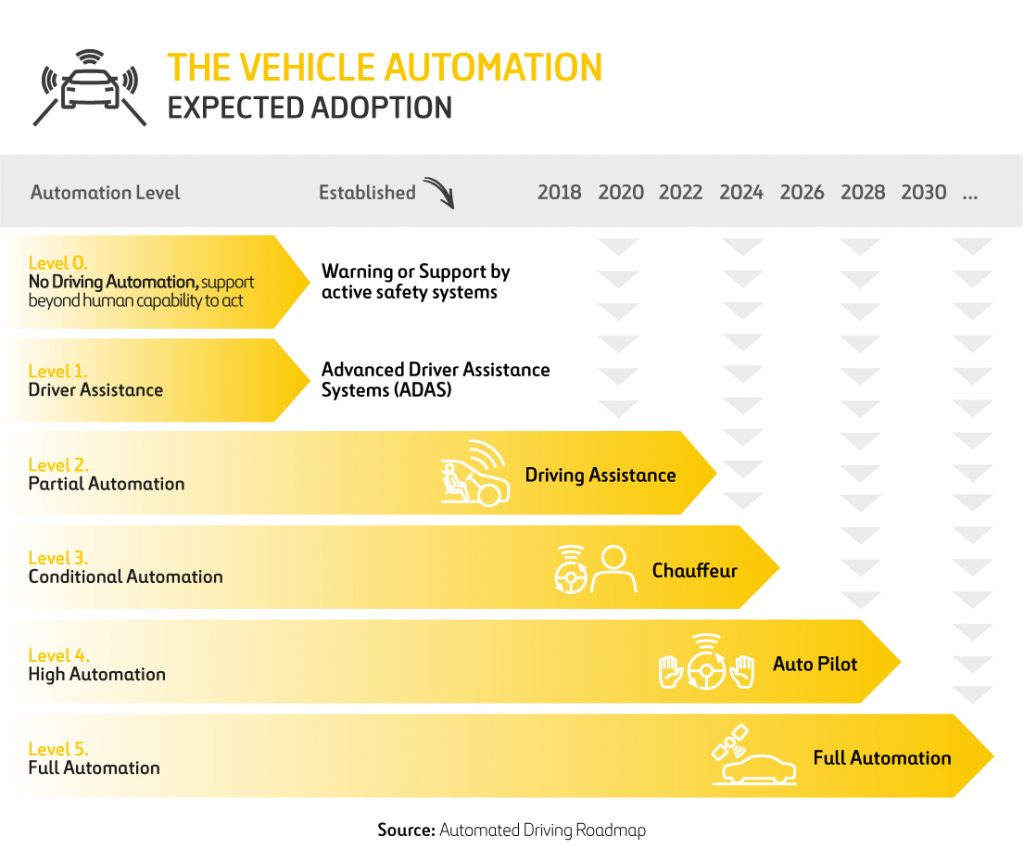Each project and asset is legally independent and has its own managers.
Connected Autonomous Vehicles
What Are Connected Autonomous Vehicles?
Connected Autonomous Vehicles (CAV) are vehicles that can replace the driver for some or all of the driving tasks. Vehicles acting automatically on the brakes, the accelerator and/or the steering control under the constant supervision of the driver (‘SAE level 2’) are already available on the EU market. According to the European Road Transport Research Advisory Council (2017), automated vehicles allowing the driver to perform secondary tasks (SAE levels 3-4) should be available by 2020 on the EU market for a limited number of driving situations (e.g. automated cruising on the motorway or urban shuttles for dedicated trips). Vehicles able to drive autonomously door-to-door (SAE level 5) in any traffic conditions are not expected to be available before 2030 except for testing.

Applications & Impacts
The impact of CAV could be huge. On the transport system, these vehicles could drastically reduce road fatalities as 90% of road accidents come from human error. In public transport, autonomous vehicles can result in a cost reduction of approximately 50%. In addition, CAVs could provide innovative mobility on-demand services, shared economy and new business models. E.g.: robotaxis, city-buses; services for elderly or impaired people; control centres to monitor and coordinate CAV traffic; on-board entertainment; on-board workplaces; etc.
From the point of view of the road operators, digitalization and the transformation of transport with CAVs are seen as an important avenue to reach the long-term policy goals set by the authorities, to streamline the internal processes, and to sustain the long-term viability of the road operators in this changing environment.
Our CAV Projects
We are currently working on different projects related to connected and autonomous cars, such as VIRIATO Project in Portugal, a research project with the University of Texas at Austin, C-Roads Project in Spain, and a project in collaboration with the Ministry of Transport of Ontario.
In all of them, the company analyzes the necessary technology to implement V2X (Vehicle-to-Vehicle and Vehicle-to-Infrastructure) communications in the roads it operates worldwide and ease the penetration of connected and autonomous vehicles. These projects study the impact on traffic during the period of coexistence between conventional and driverless vehicles and analyze the impact on the motorway business of the evolution of the use of other modes of transport such as high occupancy vehicles, car-sharing services or new passenger transport services.
